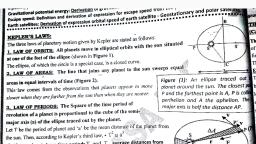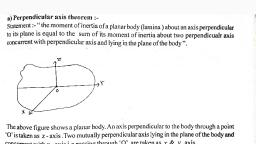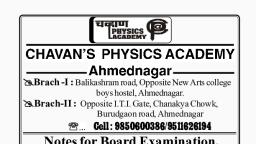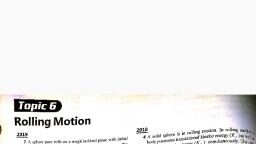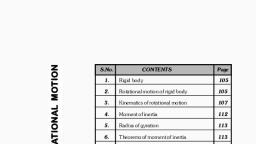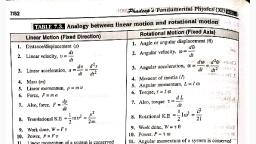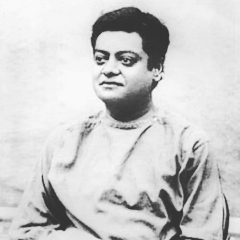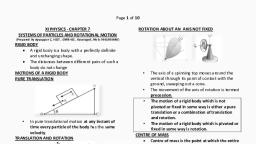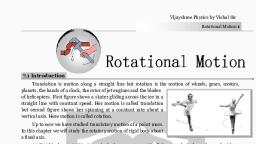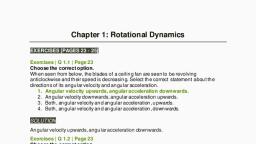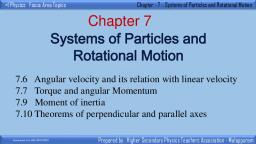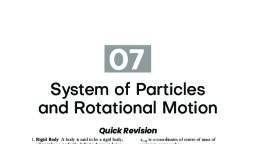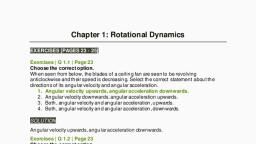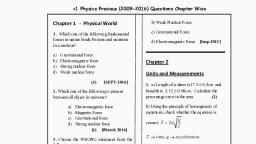Page 1 :
- -45- : 4, , , , , , , , , , , ROLLING MOTION:, Rolling motion is a combination of rotation and translation., , All wheels used in transportation have rolling motion., , Example: Let a disc rolls without slipping with an angular velocity o., This means that at any instant of time the bottom of the disc which is, in contact with the surface is at rest on the surface., , We know that the translational motion of a system of particles is the, motion of its centre of mass., , Let Vim be the velocity of the centre of mass and the franstationsl, velocity of the disc. Since the centre of mass of the rolling disc is at, its geometric centre C. Vom is the velocity of C., _For the disc, condition for rolling without slipping: Vem = Ro,, where V.m is the velocity of centre of mass (translational motion),, , , , , , , , , , , , , , , , , , , ete, , , , &, , , , , , R is the radius and m is the mass of the body. : mew, The velocity of point P; at the top of the disc (v;) has a magnitude The rolling cee sada, Vi= Vent RO = 2Vem and is directed parallel to the level surface. disc ona level surface. Note atafipinst, The veloci i is v= i - bottom of the disc which is in |the point of contact P, of the 0, elneity of point Po is v=0, that is the ects te ah vest paar a, Contact with the surface is at rest. the dise moves with velocity, &,,. The :, , vere a eee ee a ner, MA ceremieese che cn cole TAAL
Page 2 :
SIU 1D Ut FDL, UK LEMME OF MASS Of, the dise moves with velocity, Uy The disc, rotates with angular velocity about its, xis which passes through C; v,, =Ra, there R is the radius of the disc., , , , , , , wr ae aw ae roe., , KINETIC. ENERGY OF ROLLING MOTION:, The kinetic energy of a rolling body can be separated into kinetic ener., , translation and kinetic energy of rotation. The kinetic energy of a systé, particles (K) can be separated into the kinetic energy of motion of the cent : $s (translation) (MV7/2) and kinetic, articles (K’). Thus, K = K’ + MV7/2, , ation, of the rolling body is mv”,,,/2, where, ince the motion of the rolling body about the, , on of the body: K’= I@’/2, where I is the moment, ‘of the rolling body., , , , , , , , , , , , , , , , energy of rotational motion about the centre of mass of the syste’, The kinetic energy of the centre of mass, i.e., the Kinetic, m is the mass of the body and Ven is the velocity of cen, centre of mass is rotation, K’ represents the kinetic energ,, of inertia about the appropriate axis, which is the symme, , , , , , ar te), The kinetic energy of a rolling body is given by K = 5 le +5 MVE, Substituting | = mk? ; where k = the corresponding radius of gyration of the body and Vem = Ro,, , 2 2., Weget, K= imk Ven sare MVen, 2 2, . . K ;, The kinetic energy of a rolling body: K = 5m i R:, , ae ee ee eer AAT AANA MTAATAT aeAmrnata
